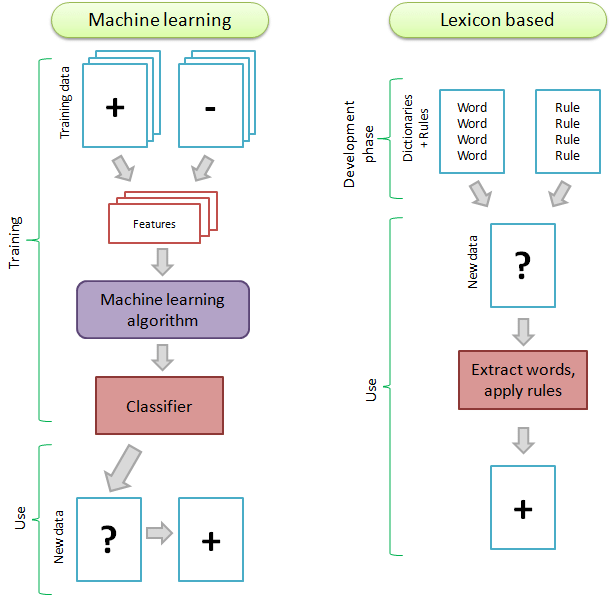Text sentiment analysis methods (2) - Traditional machine learning-based sentiment analysis methods
Introduction of traditional machine learning-based sentiment analysis
methods
Machine learning is a learning method that trains a model
from given data and predicts the results by the model. This method has been studied
so far and has achieved many effective results.
Machine learning based
sentiment analysis method refers to the extraction of features through a large
amount of labeled or unlabeled corpus, using statistical machine learning
algorithms, and finally outputting results in sentiment analysis.

Machine learning based sentiment classification methods are divided into three main
categories: supervised, semi-supervised and unsupervised methods.
In the supervised methods, different sentiment categories can be classified
by giving a sample set with emotional polarity. The supervised methods are more
dependent on data samples and spend more time on manual labeling and processing of
data samples. The common supervised methods are KNN, Naive Bayes and SVM.
In
semi-supervised methods, the text sentiment classification results can be
effectively improved by feature extraction from unlabeled text, and this method can
effectively solve the problem of sparse data sets with labeling.
In
unsupervised methods, unlabeled text is classified based on the similarity between
texts, and this method is less used in sentiment analysis.
Advantages
and disadvantages:
Traditional machine learning-based sentiment
classification methods mainly focus on the extraction of sentiment features and the
combination of classifiers, and the combination of different classifiers has a
certain impact on the results of sentiment analysis. These methods often cannot make
full use of the contextual information of the text, and have the problem of ignoring
the contextual semantics when analyzing the text content, so their classification
accuracy is affected.